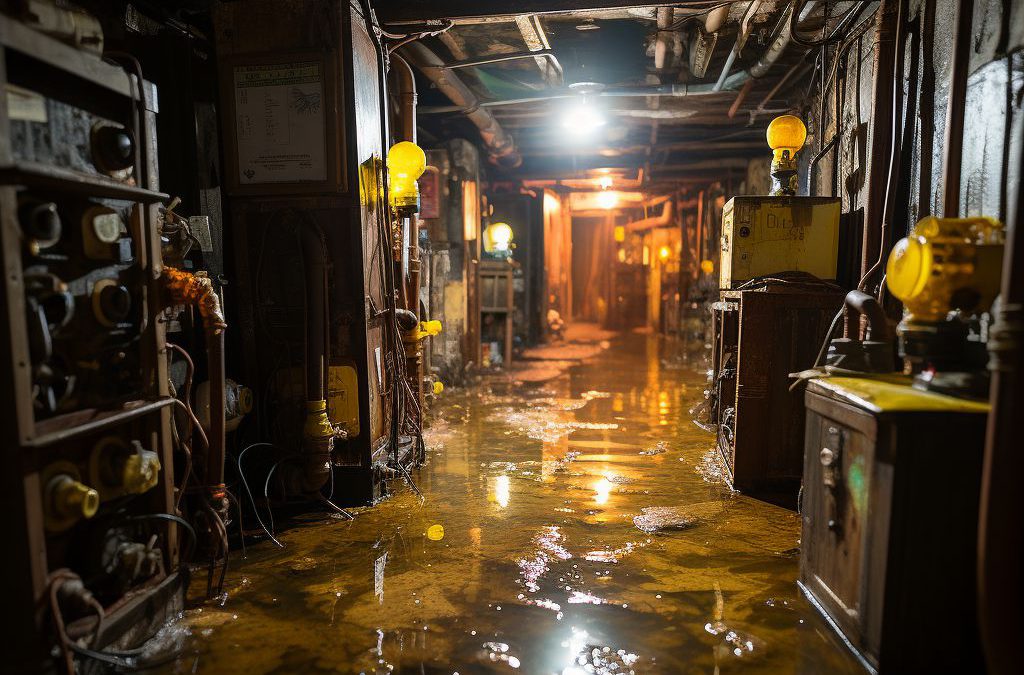The summer months bring a lot of things to our doorstep, including humidity. The last thing you want is to be stuck with a dehumidifier that has stopped working. Your living space can quickly become damp, musty and uncomfortable. So what can you do to troubleshoot and fix any issues with your dehumidifier? In this article, we’ll take a closer look at some common problems with dehumidifiers and how to fix them. By the end of this guide, you’ll be able to get your dehumidifier up and running again efficiently and effectively.
Tabe of Contents
- 1. Understanding the Common Causes of Dehumidifier Failure
- 2. Troubleshooting Tips for Dehumidifiers That Won’t Turn On
- 3. Simple Maintenance Steps to Keep Your Dehumidifier in Tip-Top Shape
- 4. How to Properly Clean the Filter on Your Dehumidifier
- 5. Professional Dehumidifier Repair: When to Hire a Technician
- People Also Ask
- Conclusion
1. Understanding the Common Causes of Dehumidifier Failure
If your dehumidifier is not functioning properly, it could be due to a variety of reasons. Here are some common causes of dehumidifier failure:
1. Power failure: The dehumidifier may not be turning on because of a power outage or a blown fuse.
2. Dirty air filter: When the air filter gets clogged with debris and dirt, it can restrict airflow and reduce the efficiency of the dehumidifier.
3. Temperature settings: If the temperature in the room is below the minimum operating temperature of the dehumidifier, it may not turn on.
4. Malfunctioning humidistat: The humidistat controls the humidity level in the room. If it’s not working properly, the dehumidifier may not turn on or shut off automatically as it should.
5. Drainage system: If the drainage system is clogged or not installed correctly, water may not drain properly, causing the dehumidifier to shut off.
6. Compressor failure: If the compressor is not functioning correctly, the dehumidifier may not cool or remove moisture from the air.
can help you diagnose and fix the problem quickly. In the next section, we’ll go over some troubleshooting tips for dehumidifiers that won’t turn on.
2. Troubleshooting Tips for Dehumidifiers That Won’t Turn On
If your dehumidifier won’t turn on, there are a few troubleshooting steps you can take to remedy the problem. Here are some tips to get your dehumidifier working again:
Check the Power Cord: The first thing you need to check is the power cord. Make sure it’s plugged into a working electrical outlet and that the outlet is receiving power. If the outlet isn’t working, try plugging the dehumidifier into a different outlet to see if that solves the problem.
Check the Control Panel: If the power cord is plugged in and the outlet is receiving power, the next thing to check is the control panel. If the control panel is not responding, it may indicate a blown fuse or circuit breaker. Check the fuse box or circuit breaker and replace any blown fuses or reset any tripped breakers.
Check the Water Tank: Another common cause of dehumidifier failure is a full water tank. If the tank is full, the dehumidifier may shut off automatically to prevent overflow. Empty the water tank and see if this solves the problem.
Check the Humidistat: The humidistat is the device that controls the level of humidity in the air. If the humidistat is set too high, the dehumidifier may not turn on. Check the humidistat and adjust it to a lower setting if necessary.
By following these troubleshooting tips, you may be able to fix your dehumidifier without the need for professional help. If your dehumidifier still won’t turn on after trying these steps, it may be time to call a technician for help.
3. Simple Maintenance Steps to Keep Your Dehumidifier in Tip-Top Shape
Keeping your dehumidifier in good condition is essential to avoid potential breakdowns that can leave your home damp and uncomfortable. Here are some simple maintenance tips to keep your unit working at its best:
Clean the Water Tank Regularly
An unclean water tank can cause your dehumidifier to malfunction. Empty and clean the water tank every two weeks to prevent buildup and bacterial growth. Use warm, soapy water and rinse thoroughly with clean water before refilling it.
Replace the Air Filter
The air filter of your dehumidifier collects airborne particles and debris, blocking them from entering your home’s air. Replace the filter every six months to maintain excellent air quality. To replace the filter, turn off the unit and remove the filter from the back. Clean the filter with warm, soapy water, then rinse and dry it thoroughly before inserting it back in.
Check the Humidity Sensor
A humidity sensor that has become dirty or damaged can also cause your dehumidifier to malfunction. Check the sensor every few months and clean as needed. A Q-tip or a soft brush can be used to clean the sensor gently.
Inspect the Drainage Hose
If your dehumidifier uses a drainage hose, inspect it regularly to ensure there are no kinks or blockages. It is essential to keep the drainage system running efficiently to prevent dampness and mold growth.
By following these simple maintenance steps, you can keep your dehumidifier in tip-top shape and avoid costly repairs down the line. Remember, consistent care will keep your dehumidifier running efficiently and protect your home’s air quality.
4. How to Properly Clean the Filter on Your Dehumidifier
If you notice that your dehumidifier is not working efficiently or effectively, cleaning the filter is likely the first step to take. A clogged filter can prevent the unit from effectively removing excess moisture from the air in your home. Before cleaning the filter, be sure to unplug the dehumidifier and examine the filter for any signs of damage. If the filter is damaged or worn, it will need to be replaced before the dehumidifier can function properly again.
Step 1: Find the Filter
Most dehumidifiers feature a removable filter located on the back or side of the unit. Refer to the user manual or manufacturer’s website for specific guidance on locating and removing the filter.
Step 2: Clean the Filter
Once the filter has been removed, use a soft brush or vacuum cleaner to remove any dust or debris. If the filter is especially dirty, it may need to be rinsed with water. Avoid using soap or other cleaning products, as these can damage the filter and reduce its effectiveness.
Step 3: Let the Filter Dry
Before replacing the filter, allow it to dry completely. This ensures that the filter does not become moldy or damaged and that it functions effectively.
Step 4: Replace the Filter
Once the filter is dry, slide it back into the dehumidifier and secure it in place. Test the dehumidifier to ensure that it is functioning properly.
By cleaning the filter regularly, you can extend the lifespan of your dehumidifier and improve its overall performance. Be sure to check the filter at least once a month, especially during periods of heavy use, to ensure maximum efficiency.
5. Professional Dehumidifier Repair: When to Hire a Technician
If the troubleshooting tips and maintenance steps mentioned earlier don’t seem to solve the issues with your dehumidifier, you might need to seek professional help. Here are some situations when you should definitely consider calling a technician:
1. Contamination concerns: If you’re worried that your dehumidifier may have been exposed to harmful particles or bacteria, it’s best to hire a professional to handle the repair. They have the necessary experience and equipment to conduct a deep clean and get rid of any safety hazards.
2. Complex repairs: If you’re not comfortable tinkering with mechanical and electrical components, it’s advisable to hire a professional technician for complicated repairs. The inner workings of a dehumidifier can be intricate, and attempting DIY fixes could lead to further damage and higher repair costs.
3. Warranty considerations: If your dehumidifier is still under warranty, it’s best to contact the manufacturer or authorized repair person to fix it. Attempting self-repairs or taking it to an unauthorized repair person could void the warranty and potentially cost you more in the long run.
When looking for a professional dehumidifier repair service, you should do some research to ensure that you’re hiring a trusted and reputable technician. Check reviews and look for certifications to ensure quality service. With proper care and maintenance, your dehumidifier should function optimally and provide you with a comfortable, healthy living space.
People Also Ask
Why is my dehumidifier not collecting water?
If your dehumidifier is not collecting water, it could be due to a malfunctioning compressor or a clogged air filter. Check if the air filter is dirty and clean it if necessary. If the compressor is not working, you may need to get it repaired or replace the dehumidifier.
How do you reset a dehumidifier?
To reset a dehumidifier, unplug it from the power source and wait for 10-15 minutes. Then, plug it back in and turn it on. If it has a reset button, press it and hold it for a few seconds. Your dehumidifier should start working again.
Why is my dehumidifier making noise?
A dehumidifier may make noise due to a variety of reasons, such as a faulty fan motor, damaged blower wheel, or a loose compressor. It is advisable to turn off the unit and check for any loose parts or damage. Some noises are normal, like a gentle hum from the fan, but anything louder or abnormal should be addressed.
How often should I clean my dehumidifier?
You should clean your dehumidifier once every two weeks to prevent any clogs or dust build-up. Clean the air filter every two weeks, clean the water tank once a month, and deep-clean the unit once every six months. By regularly cleaning your dehumidifier, you can ensure that it works efficiently and prevents any damage.
How long should a dehumidifier last?
A dehumidifier can last up to 10 years on average with proper maintenance and care. However, its life span may vary depending on the usage and environment. It is recommended to buy a dehumidifier from a reputable brand that offers a warranty and to follow the instructions for regular maintenance.
Conclusion
A malfunctioning dehumidifier can be a headache, but with a little troubleshooting, it’s possible to fix the problem yourself. Common issues include clogged air filters, loose or damaged parts, and compressor malfunction. Regular maintenance and cleaning can ensure the longevity and efficiency of your dehumidifier. However, in some cases, it is necessary to get a professional to repair or replace the unit.

Senior HVAC Technician
With over 15 years in the HVAC industry, Lucas specializes in diagnosing intricate AC system issues. His commitment to precision and thoroughness ensures every repair restores optimal functionality to your cooling systems.

